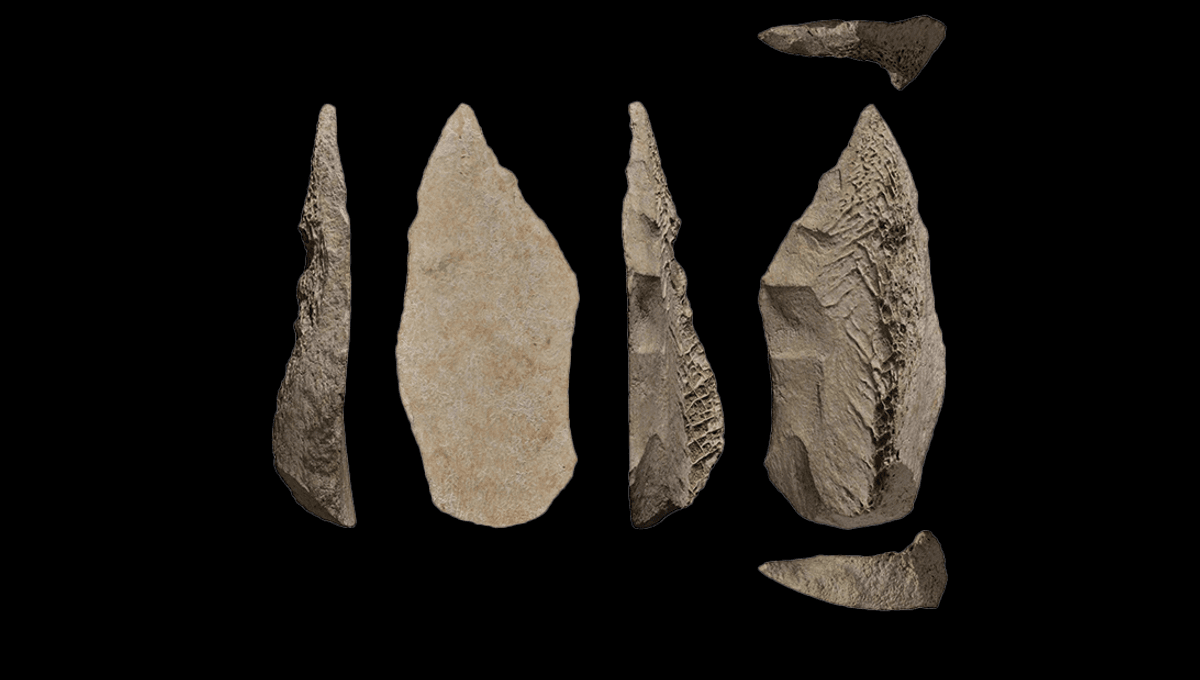
Archaeologists have found an extremely unusual Neanderthal artefact at an excavation site in Spain, which is forcing them to rethink what we know of these extinct humans and their technologies. The researchers found the only known example of a horse bone spearhead, which shows that these ancient hominins could make hunting weapons out of such materials.
Bone technologies are not unheard of in hominin species. They have been observed in various contexts where our ancient ancestors and other extinct species lived, some dating back to the Lower Palaeolithic period. The earliest examples have been found in South Africa (dating to around 2 to 1.5 million years ago) and at Tanzania’s Olduvai Gorge (dating to around 1.8 to 0.8 million years ago).
In Europe, there is evidence of bone tools in multiple pre-Neanderthal sites: Boxgrove, England; Gran Dolina, northern Spain; Castel di Guido and Isoletta in Italy; and Bilzingsleben and Schöningen in Germany.
Neanderthal bone tools have also been recovered in the past, include bones chipped and carved for hide scraping or to be used as hammers, wedges, digging implements, and other purposes. They were usually minimally modified tools and have been associated with activities based on the stone (lithic) tools they otherwise resemble.
Until now, however, there was no evidence that Neanderthals used bone tools for activities like hunting. As such, the discovery of a spearhead at the Abric Romaní rock shelter, near Barcelona, Spain, represents an important development.
The rock shelter was a camping site for Neanderthals from around 75,000 to 40,000 years ago and was used by them pretty much up to the point at which they became extinct. Over the last 40 years, excavations at the site have documented different types of occupation and ways that the Neanderthals lived during that time.
During their latest excavation, a team of archaeologists from the Catalan Institute of Human Paleoecology and Social Evolution (IPHES) found various Neanderthal tools made of stone, wood, and bone, but the spearhead is arguably the most impressive.
In order to identify it as a tool intended to be used as a weapon, the archaeologists had to consider various factors. Firstly, the spear point, which has been dated to around 50,000 years ago, has microscopic linear impact marks and impact fractures at its tip that are characteristic of a spear.
It therefore exhibits signs that it was intentionally knapped into shape. Furthermore, this shape also has hafting traces on it, suggesting it was created to be attached to a wooden shaft.
“Abric Romaní contributes to our understanding of Neanderthal hunting behaviour and the significance of composite bone tools in their technological repertoire 50,000 years ago,” the team explain in their study.
“This discovery highlights the flexibility and adaptability of Neanderthal technology, providing evidence of bone technology that is sometimes obscured in the archaeological record and offering valuable insights into their hunting strategies during the Middle Palaeolithic.”
Some have previously suggested that Neanderthals knapped bone tools when they lacked sufficient stone alternatives, but the researchers reject this hypothesis in this context. This is because of the abundance of lithic raw materials and actual stone tools found at the site.
“There is intentionality in the manufacture and shaping of the tool,” they add.
It is possible the bone piece was shaped from longer bones, such as the leg bones of a horse or deer, which were broken to access their marrow. It is therefore unclear whether the Neanderthals who made the spear had already selected a bone for this purpose, or whether they simply appropriated it as a secondary consideration.
But how unusual is this discovery? On the one hand, we know that hominin species were making bone tools long before the Neanderthals did so. It is possible bone spears were more common than we believe, but they have just not survived in the archaeological record. What we do know is that the manufacturing of bone weapons became more prevalent in the Middle Stone Age, mostly at the hands of modern humans.
The bone industry of Neanderthal groups at Abric Romaní “extends our knowledge of both their hunting technology, through their technical skills for shaping and using bone as a raw material”, the authors conclude.
It also provides greater insights into their hunting behaviours which “paves the way for future investigation in the growing field of early bone technology, offering the potential to uncover additional insights into resource use, technological behaviour, and the subsistence strategies of ancient human groups.”
The study is published in Nature.
Source Link: First Ever 50,000-Year-Old Neanderthal Bone Spear Point Shows They Were "Flexible" Crafters